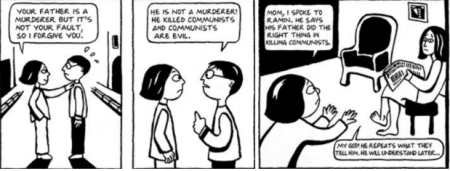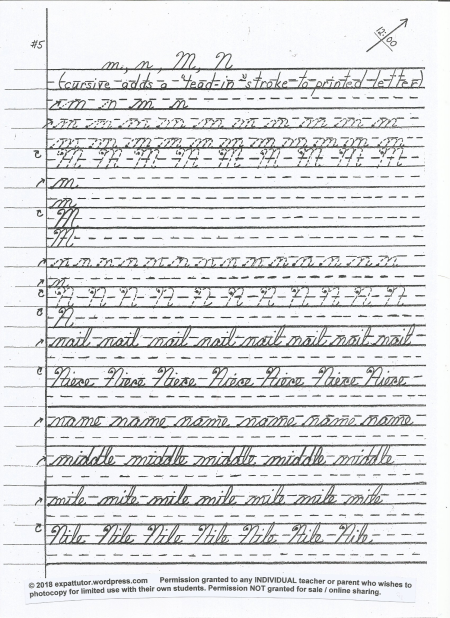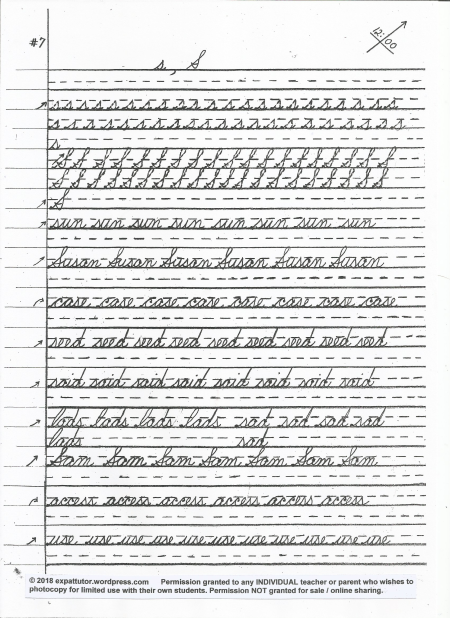 Death Note: Perhaps the most famous Japanese manga (graphic novel) ever written
Death Note: Perhaps the most famous Japanese manga (graphic novel) ever written
Mangas are the new popular genre of literature currently sweeping through the world’s youth. Are they something which should be accepted or encouraged by teachers and parents? Are they worthy of respect? This post will address those questions.
One of my teenage students is consumed with mangas, and this is how I came to know about them. After investigating, I think the genre is worthy of respect, and something teachers and parents would benefit from knowing about. However, they would like to know:
–What are mangas? Why have they become popular? What is the attraction?
–Are they acceptable? Are they an art form, or are they trash?
–Should they be encouraged, or discouraged?
It took me a little while to understand what mangas were. They are essentially Japanese graphic novels that span the entire gamut of fiction experiences covered in more traditional literature. The best and most popular mangas are made into animé series. Both mangas and animé feature characters with neotenic features.
Mangas are divided into five general categories, according to target demographic audience (instead of by subject genre):
Kodomomuke: for children
Simple and imaginative stories for children, which often teach morals and other good values, focusing on friendship, and solutions to problems.
Shojo: for teenage girls, ages 10-18
Female lead characters, focusing on romance, interpersonal relationships, but also with action and adventure.
Josei: for adult women.
Featuring adult women characters (and sometimes male lead characters), in action adventures, slice-of-life, realistic interpersonal relationships, romance, and serious subjects.
Shonen: for boys under age 15
Young male heroes, focused on action, adventure, and fighting.
Death Note (in original Japanese with English subtitles), a psychological/mystery series, and one of the most famous mangas and animé series ever produced, is aimed at the shonen demographic. (Voice-over English version; Voice-over French version). Death Note is considered to be one of the best mangas ever written.
Great Teacher Onizuka, a humorous series about the problems of a young male teacher, is also for the shonen demographic.
Seinen – for young adult men, ages 15-24, but including men ages 25-50
Tend to be psychological or action thriller/adventures (with more violence than Shonen). One Quora writer stated that seinen plots ae similar to Game of Thrones.
Mangas and Animé in Asia
In Asia, mangas and animé are read and watched voraciously by ALL age groups. Why?
Because animé can be produced much more cheaply than movies with real people, animé makes it possible to have a much wider variety of themes; it is essentially a pulp-fiction market. Therefore, many ideas can be explored which are non-existent in Western media culture. Authors have a much higher level of freedom to explore their ideas than do authors in the West. However, readers/watchers in the West are more hesitant to share that they are manga/animé fans, as most non-Asian adults don’t yet consider it acceptable and normal, as it is in Asia.
What Are the Manga and Animé that My Teenager Is Reading/Watching?
If you are a parent or teacher who is worried whether mangas and animé are acceptable–if your teenager is watching animé series–I suggest sitting down and watching a series with your child, right from the beginning. You might be surprised to find it captivating. Even if you decide to watch only a few episodes, you will then have an idea what it is about.
Alternatively, I suggest watching some of the Death Note series linked to above. I have provided one link with subtitles, and another link that is dubbed in English (voice-over), and a third link dubbed in French. These series are all produced in Japanese, and your teenager may be watching them reading subtitles. Mangas, written in Japan, are now produced and sold in English, and many other languages.
 Persepolis Text Example
Persepolis Text Example
So far, I haven’t personally seen or read a manga, but I have read one graphic novel, Persepolis. This is a true story of a teenager who grew up in Iran after the Iranian Revolution. I was really shocked when I found it being read in English class in our local high school, as an assigned book. I then read it myself, and it changed my opinion. It was an interesting story which held my attention. I included a photo of the text above so that readers may see just how the text looks, and what the reading level is.
I thought about poor readers. There was quite a bit of reading here, and in a format more accessible to poor readers. Also, teenagers who are extremely visually-oriented may be able to read this more than a traditional novel. This doesn’t mean we should discourage traditional novels, but I do think there is room for graphic novels, as well.
I have watched both entire series of Death Note and Onizuka. I thought they were both good series. Some parents ask if Death Note is advisable for preteen girls and boys. I would say yes. While the story initially seems a bit macabre, it’s actually about a boy who finds a notebook, then discovers that if someone’s name is written in the notebook, that person will die. So he decides to start doing good in the world by getting rid of all the serious criminals. But after some time he becomes tempted by the power he has, and begins to use the power of the notebook toward his own personal gain. This leads him down a morally-dark path. However, these are just the sorts of moral dilemmas our children and pre-teens are dealing with every day. Our children endure daily conflicts with other students, teachers and parents–some of which lead to thoughts of revenge. Such issues are explored through this medium of fiction, just as they are in other fiction mediums.
It’s been some time since I watched Death Note, but as I recall, it has a morally good ending. Onizuka was good, but in my opinion, not appropriate for pre-teens. I’d say it’s more appropriate for older teens and adults. It also deals with realistic moral issues in a humorous way.
Most mangas and animé series seem to be dealing with action, adventure, relationships, and moral issues–exactly the same issues seen in all fiction mediums. Yes, the format is different, but let’s now look at why some people like it.
Why Some People Enjoy Mangas and Animé
- Getting Involved in Characters’ Lives and Ongoing Situations: Many popular animé series have many, many episodes, similar to watching a whole series. Sixty to one hundred episodes are very common. A few even have 900 episodes, comparable to watching a soap opera that goes on for years. This means that during the day, while doing other things, they may be eager to get back to the manga or animé to find out what happens next, and they may be thinking about the story and the characters’ lives and dilemmas. (This is just how any of us feel while reading a good fiction book or when we are caught up in watching a series or daily soap opera). In other words, the plots are really amazing, and the reader/viewer cares what happens to the characters. Many plot lines are very complex, deal with many real-life issues on the cutting edge of current life.
- It’s a good, positive way to relax. Students have daily stresses from school, interpersonal relationships, homework, and physical activities and responsibilities. Just as any good book or program can transport us to another place, and another life, so can mangas and animé. Emotional involvement in the characters’ lives and dilemmas transports us far from our own problems, gives us a break, and returns us to our own lives refreshed, and more ready to deal with our own situations. Reading/watching offers us a fantasy escape from our real lives, or even just an enjoyable fantasy adventure. Also, seeing characters’ successfully resolve their dilemmas helps us gain positivity that we can, in fact, successfully resolve our own dilemmas.
- Manga and animé fans really enjoy this type of artwork. Neotenous figures (characters with juvenile-appearing characteristics, maintained into maturity are very popular in Japanese society and culture) are a particular feature of both manga images and animé characters of all ages (and of many people in Japanese society). One feature of the character artwork which is highly appreciated by fans is the way through which characters show their emotions through artwork, rather than through words. Stress might be shown by beads of sweat falling from the forehead, or excitement might be shown by the way a character’s hair is moving. These sorts of things can be done in animé, but would be difficult to do with live, human characters.
Before we are too critical of someone liking this sort of artwork, we need to remember that all artwork is primarily a matter of personal taste. For example, my personal preference is very realistic drawing and paintings, while other people seem to enjoy modern art. While I personally cringe at both modern art and animé art, everyone has the right to their own personal preferences.
Should you be worried if your children or your students like animé?
After investigating this topic, I would say NO, DON’T WORRY.
While the most popular series can be dubbed so that they can be listened to in your child’s own language, most animé is in Japanese, and your child will be forced to read subtitles in order to watch it. While the language is not complicated, there is still a lot of useful vocabulary in the reading. Even if it is not traditional reading, AT LEAST IT IS READING AND LEARNING VOCABULARY (which is a lot better than many young people are doing today).
Even in stories that contain action and violence, the characters are usually acting out of motivations such as saving their friends, or saving the world. In cases where characters begin to act selfishly, viewers see the moral problems this creates, and see the bad results the character brings upon himself.
As a parent, I would much rather have my child or teenager watching animé and thinking about all the issues presented, instead of a lot of less productive and less positive activities he or she could be up to.
As a teacher, it’s our job to expose students to various kinds of literature. If students can realize that the teacher knows about mangas and can appreciate why some people could enjoy mangas and animé, students will also be more open to engaging with the teacher and class regarding more traditional literature.
I highly recommend to all teachers and parents to watch some or all of the Death Note series, at the links I have provided YouTube). You will find the story surprisingly interesting, and your students will impressed that you have watched it. It will give you another way to engage with your child, or with your students. (Personally, I watch most of the series that teenagers tell me they are watching, and I recommend it to you, too.)


























